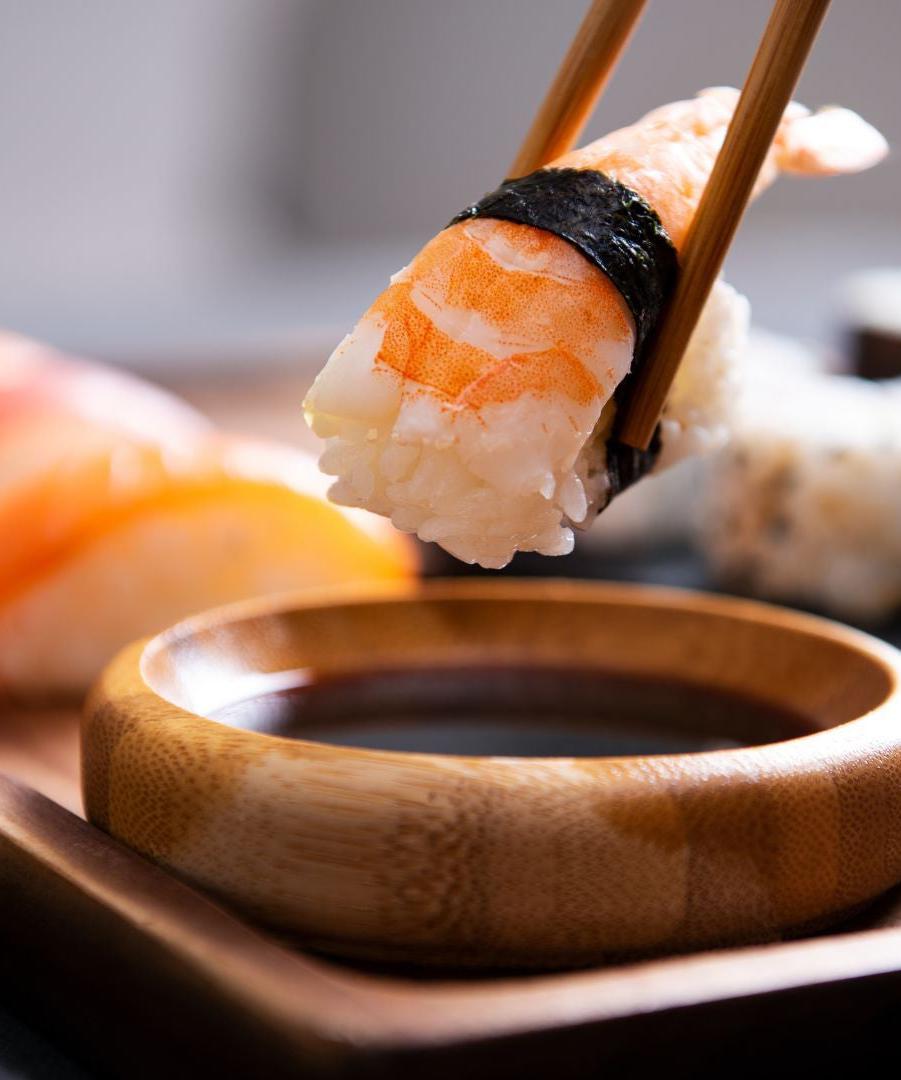What is Light Soy Sauce and Its Role in Asian Cuisine
Light soy sauce, often referred to as “thin soy sauce” or “light soy sauce”, plays a pivotal role in Asian cuisine. It’s the liquid extracted during the initial stages of the soy sauce fermentation process. Made primarily from soybeans and wheat, this condiment is lighter in color and saltier in taste compared to its counterpart, dark soy sauce. It’s a staple in many dishes, from stir-fries to sushi, and is often used as a dipping sauce. The savory umami flavor of light soy sauce is irreplaceable, but sometimes, we find ourselves in need of a substitute. Whether you’re out of stock or looking for a healthier alternative, there are plenty of options to explore.
Understanding Umami: The Science Behind Soy Sauce
Umami, often referred to as the “fifth taste”, is what makes dishes savory and deeply flavorful. It’s the taste sensation that soy sauce, among other ingredients, brings to the table. Derived from the Japanese word for “delicious”, umami is caused by the presence of glutamate, a type of amino acid. When we talk about the irreplaceable taste of soy sauce or its substitutes, we’re essentially chasing that umami flavor.
Why Seek a Substitute for Light Soy Sauce?
So, you might be wondering, “Why would anyone want to substitute light soy sauce?” Well, there are several reasons. Some folks are allergic to most types of soy sauce on the market, as there are soy or wheat in the ingredients, making traditional soy sauce off-limits. or these individuals, understanding the causes, symptoms, and treatments of soy allergies is crucial. . Others might be looking to reduce their sodium intake, given the salty flavor of regular soy sauce. Additionally, with the rise of vegan and gluten-free diets, many are on the hunt for alternatives that align with their dietary choices. If you’re dealing with a soy allergy or looking for diet options suitable for those who are, you might find the soy allergy diet guidelines from . And sometimes, you might just be in the middle of a recipe and realize you’re out of light soy sauce. Whatever the reason, it’s always good to know your options.
10 Top Picks: Best Light Soy Sauce Substitute
Oyster Sauce: A Freshness Flavor Alternative
Oyster sauce, a staple in Chinese cuisine, offers a unique blend of sweetness and saltiness. Made from oyster extracts, sugar, salt, and sometimes soy, it has a thicker consistency compared to light soy sauce. While it doesn’t mimic the exact flavor of soy sauce, it does bring a rich umami flavor to dishes. It’s a good substitute when your recipe calls for a touch of sweetness combined with that savory depth. Plus, for those avoiding soy, some brands offer a soy-free version made from mushrooms.
Hoisin Sauce: A Flavorful Twist
Hoisin sauce often dubbed the “Chinese BBQ sauce”, hoisin is a thick, fragrant sauce made from soybeans, vinegar, sugar, garlic, and various spices. It’s sweet, slightly tangy, and packed with umami. While it’s much sweeter than light soy sauce, it can be a delightful substitute in certain dishes, especially when you’re looking to add a touch of sweetness. It’s great in marinades, stir-fries, and as a dipping sauce. But remember, a little goes a long way!
Tamari Sauce: The Gluten-Free Japanese Soy Sauce
For those who’ve waved goodbye to gluten, meet your new best friend: Tamari. Originating from Japan, Tamari is a byproduct of miso paste and is often described as a richer, less salty version of regular soy sauce. It’s made mostly from soybeans, making it thicker and darker. If you’re whipping up a Japanese dish or simply want a gluten-free alternative to light soy sauce, Tamari is a top choice.
Teriyaki Sauce: Japanese Flavor Alternative
Teriyaki sauce, a delightful blend of soy sauce, sake (or mirin), and sugar, is a popular Japanese condiment. It’s both sweet and salty, making it perfect for marinades, especially for grilled dishes. While it’s a bit sweeter than light soy sauce, it can be a fantastic substitute, especially when you’re looking to add a touch of Japanese flair to your dish.
Unagi Sauce: Japanese Flavor Alternative
Unagi sauce, often associated with that delicious grilled eel sushi, is a thick, sweet, and slightly smoky sauce. Made from soy sauce, sugar, mirin, and sake, it’s reduced to a syrupy consistency. While it’s distinctively sweeter than light soy sauce, it can be an intriguing substitute in dishes where you desire a hint of sweetness combined with the savory depth of soy. It’s especially delightful in grilled dishes, giving them a glossy finish and a burst of umami flavor.
Coconut Aminos: A Soy-Free Choice
For those who’ve bid adieu to soy, coconut aminos might just be your saving grace. Made from the sap of coconut trees and sea salt, this sauce is a soy-free and gluten-free alternative to light soy sauce. It’s slightly sweeter, with a hint of saltiness, making it a versatile condiment in the kitchen. Whether you’re whipping up a stir-fry, marinade, or salad dressing, coconut aminos can seamlessly fit the bill.
Liquid Aminos: The Balanced Flavor Best Substitutes
Liquid aminos, derived from soybeans, offer a flavor profile similar to light soy sauce but with a touch less sodium. It’s a liquid protein concentrate, making it a favorite among vegans and vegetarians. If you’re looking for a balanced flavor substitute that’s close to the real deal, liquid aminos might just be your go-to. Plus, it’s gluten-free!
Worcestershire Sauce: A Western Alternative
Venturing a bit westward, Worcestershire sauce, with its complex flavor profile, can be an interesting substitute for light soy sauce. Made from vinegar, molasses, sugar, and anchovies, among other ingredients, it’s tangy, sweet, and umami-rich. While it doesn’t mimic the exact taste of soy sauce, it can add a unique twist to Asian dishes, especially marinades and stews.
Maggi Seasoning: The European Touch
Maggi seasoning, a staple in many European kitchens, is often likened to a more intense version of soy sauce. It’s rich in umami flavor, making it a suitable substitute in dishes where you want to enhance the savory notes. A few drops can elevate the taste of soups, stews, and stir-fries. However, it’s worth noting that it’s quite salty, so use it sparingly!
Homemade Soy Sauce Substitute: Crafting Your Blend
If you’re feeling a bit adventurous, why not craft your own light soy sauce substitute? Combining beef or vegetable broth with a touch of vinegar, molasses for sweetness, and a pinch of ginger and black pepper can create a concoction that mimics the saltiness and umami flavor of soy sauce. It’s all about experimenting and finding the right balance that suits your palate.
Pairing Your Dishes: Best Uses for Each Substitute
Each substitute for light soy sauce has its unique flavor profile, making them suitable for different dishes. For instance, Tamari and liquid aminos are great for sushi and sashimi, while coconut aminos and hoisin sauce shine in stir-fries and marinades. It’s all about understanding the nuances of each substitute and pairing them with dishes that complement their flavors.
Potential Health Benefits of Soy Sauce Alternatives
Venturing beyond the realm of taste, many light soy sauce substitutes come with their own set of health benefits. For instance, coconut aminos, being soy-free and gluten-free, is a boon for those with allergies or sensitivities. Tamari, while similar to soy sauce, often contains less sodium, making it a heart-friendly option. Liquid aminos, on the other hand, are packed with essential amino acids, which are the building blocks of proteins. By opting for these alternatives, not only are you diversifying your flavors, but you’re also potentially boosting your health.
Tips for Storing and Using Soy Sauce Substitutes
Just like with light soy sauce, proper storage of its substitutes ensures they retain their flavor and stay fresh longer. Most of these sauces, especially once opened, prefer the cool, dark confines of a refrigerator. And when using them in cooking, it’s always a good idea to start with a small amount. Remember, you can always add more, but it’s a tad tricky to undo an overly salty stir-fry or stew.
Conclusion: Embracing Versatility in Asian Cooking
Asian cuisine, with its rich tapestry of flavors, offers a world of possibilities. And while light soy sauce holds a special place in many dishes, it’s not the end-all-be-all. Whether you’re seeking a substitute out of necessity or curiosity, the alternatives are plenty and varied. From the sweet notes of hoisin sauce to the balanced flavors of liquid aminos, there’s a world of umami out there waiting to be explored. So, the next time your recipe calls for light soy sauce, why not take a culinary detour? After all, variety is the spice of life and cooking!




